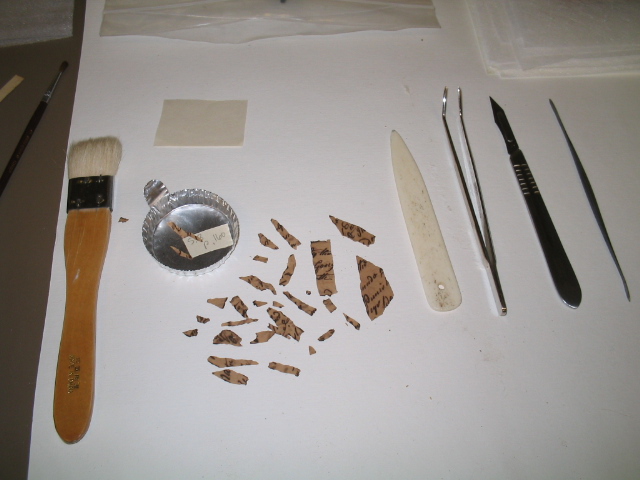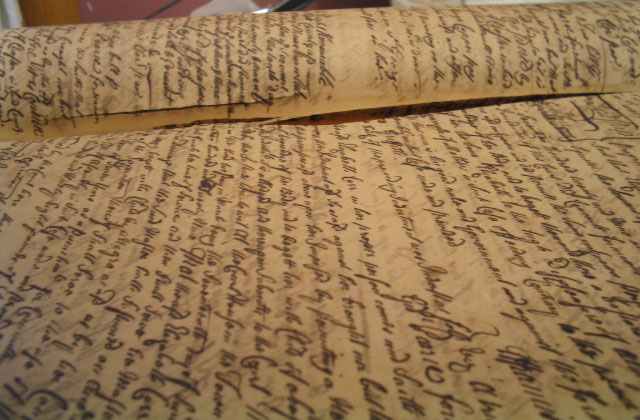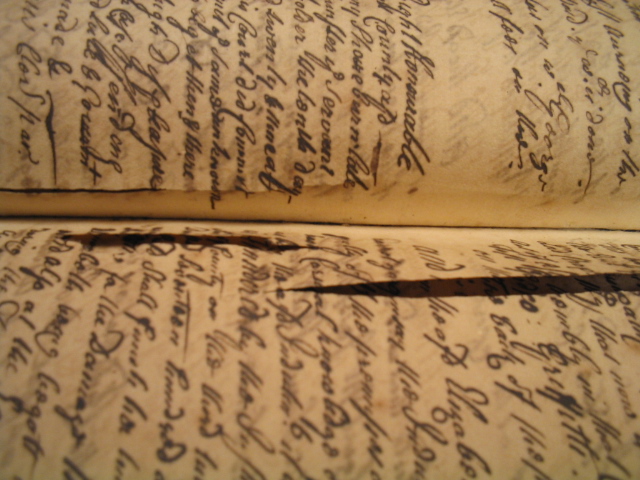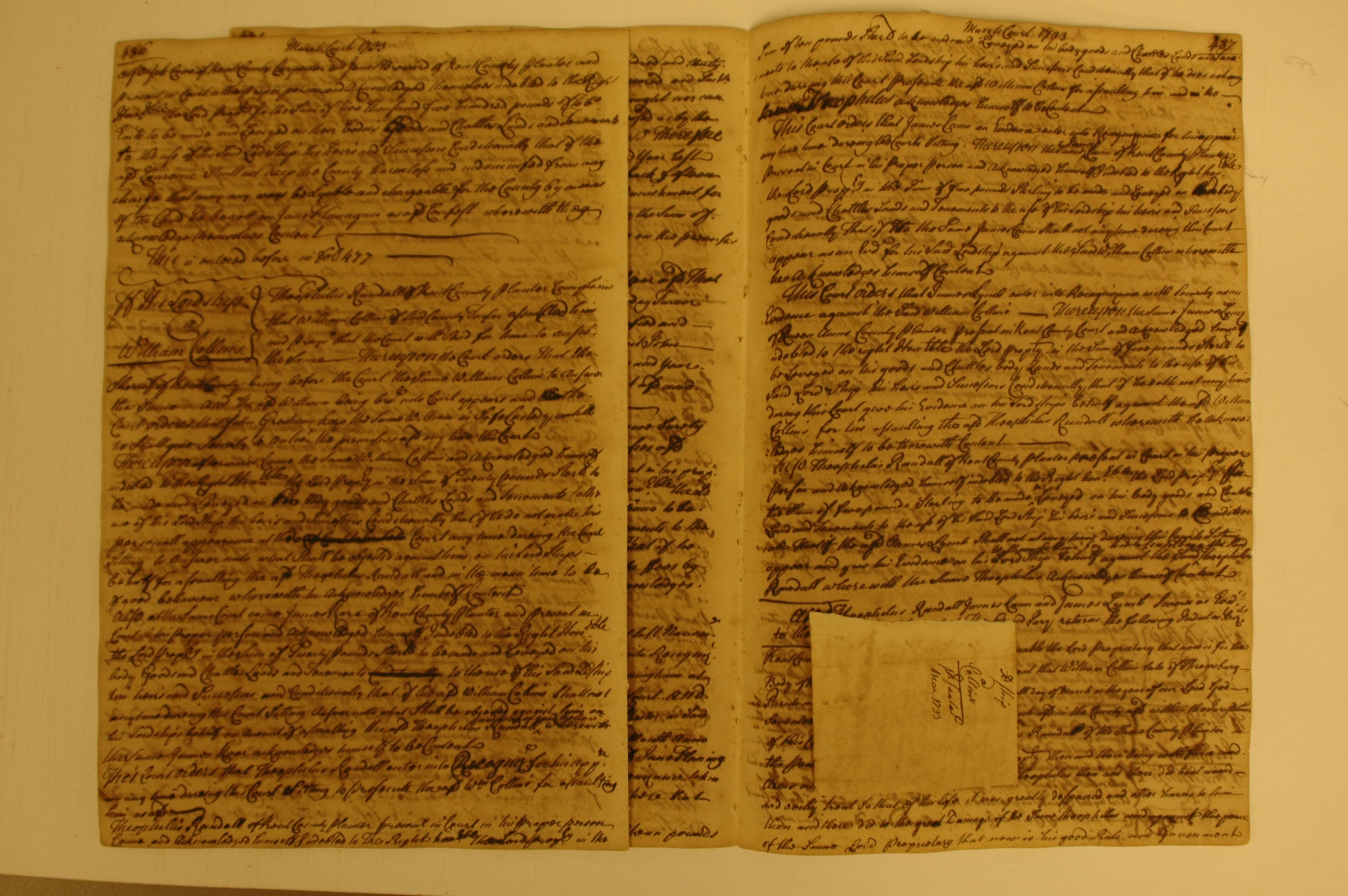|
|
Iron Gall InkWhat is Iron Gall Ink?Iron gall ink was in popular use from about the 12th century up until new technologies made it obsolete in the 19th century. It was easily made at home and it was permanent, which explains its popularity. When first applied the ink is a light brown or sepia color, but as it dries it turns purplish-black. Because every individual made their own ink with their own recipe, the chemical structure of these inks can vary, but the basic components are iron and tannin, found in galls or other plant material. As a result of the iron used to make the ink, most Iron Gall Inks are susceptible to corrosion. The ink in the paper rusts the same way any metal would when it is exposed to changes in temperature and humidity. As it deteriorates over time, the chemicals released from the corrosion seep into the paper, discoloring and weakening it. Another type of damage caused by iron gall ink corrosion occurs when the writing itself falls out of the paper, usually where the ink has been most heavily used. Here is some background information on Iron Gall Ink. Iron Gall Ink was used so frequently and so commonly throughout history that
it is a part of many valuable collections. For example, Hans Christian Anderson's
manuscripts were written in Iron Gall Ink.
Because so many of the world's cultural and historical treasures were written or drawn in ink that has corroded over time,
proper treatment is of the utmost importance.
Maryland State Archives treatment of Iron Gall Ink corrosionThe method we use to treat ink corrosion. 
To the right you can see some of the shards of paper that split from the rest of the paper. The binding of the book (MSA SC 5458-48-6) was in fairly good condition, as was the sewing, but the pages had shattered or split where the ink had done the most damage. Below you can see some of the damage the ink had done to the paper. Due to the ink corrosion, every time a page was turned it split in the exact same place. 

|
Mainpage
References:
1. Reissland, Birgit, 2000. Visible progress of paper degradation caused by iron gall inks. The Iron Gall Ink Meeting, Newcastle upon Tyne, University of Northumbria, 4-5 September 2000. Postprints: 67-72.